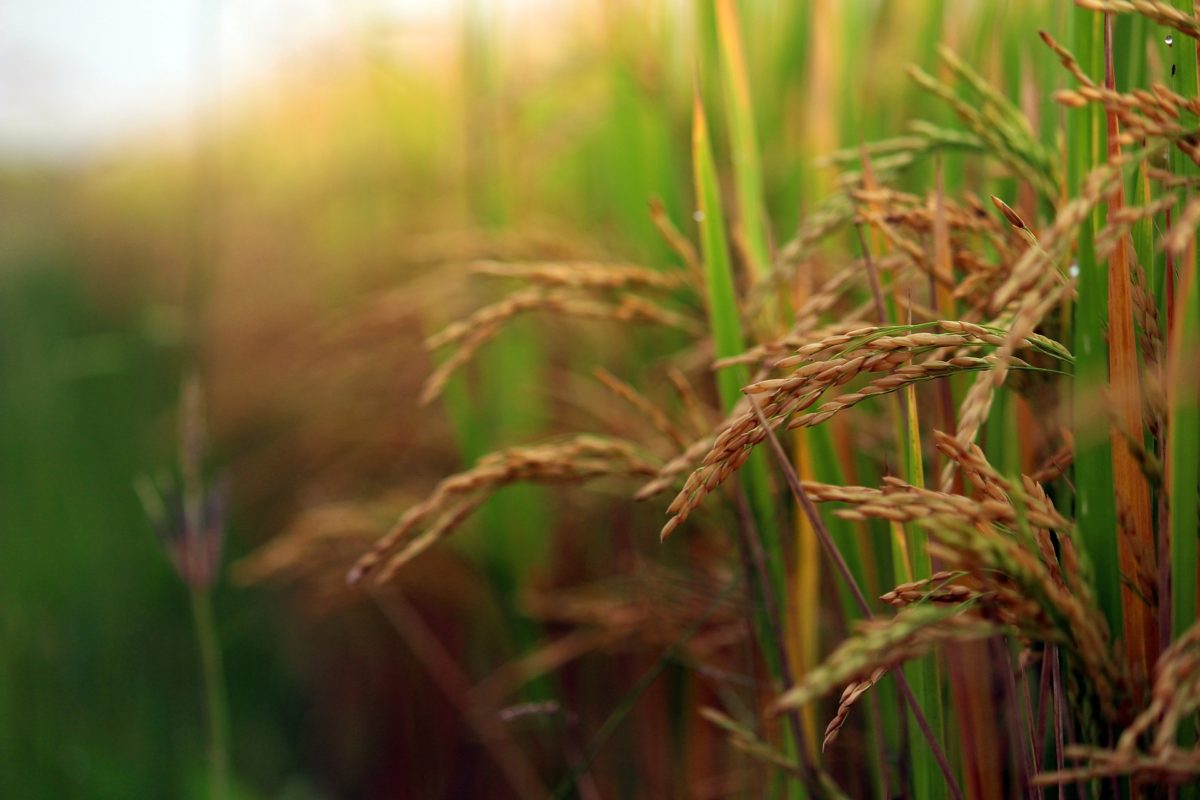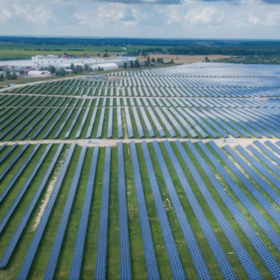With the second largest extent of arable land in the world – almost 395 million acres – the world’s largest extent of irrigated croplands (almost 216 million acres) and 58% of its population dependent on agriculture, India should be a hotbed of agrivoltaics.
The nation, however, has barely dipped its toes into the idea of combining solar generation and agriculture on the same land, an innovation reportedly first conceived by Adolf Goetzberger and Armin Zastrow in 1981.
India wants to double farm income by 2022 and a packed session entitled AgriPhotovoltaics – Harvesting the Sun for Power and Food at the recent Renewable Energy India (REI) trade show bore out curiosity in the concept.
The world’s first agrivoltaic project was deployed by Akira Nagashima in Japan in 2004, said Tobias Winter, director of the Indo-German Energy Forum at the session. Last year, permits were issued for 1,347 such schemes in land scarce Japan and 2 GW of agrivoltaic generation capacity has been installed in Japan, Korea, France, Germany and the U.S. alone.
First steps
By contrast, India hosts just 4-5 MW of agrivoltaics at present. The first steps were taken by the Central Arid Zone Research Institute (CAZRI), with a one-acre, 105 kWp pilot project in Jodhpur in 2017. The institute then added a 25 kWp, 666m² project at its regional research station in Bhuj, Rajasthan.
After installation, it was the rainwater harvesting potential of solar which attracted attention. “In one acre [of] land, a total of 40mm irrigation can be provided through [a] drip irrigation system,” CAZRI principal scientist Priyabrata Santra told pv magazine. “The rainwater collection efficiency from the agrivoltaic system at CAZRI Jodhpur has touched a high of 69.2%. With 105 kWp, we can harvest 1.5 lakh liters of water. That is a huge achievement considering water is really scarce.”
While Santra is tackling the problems of desertification with ‘agriPV’, Munjal Rangwala – a director at engineering, procurement and construction services company Harsha Abakus Solar – has tested the concept at two sites in Gujarat. Harsha Abakus has a 1 MW agriPV project in the Jamnagar district of Sikka and 1 MW facility in the Kutch district of Panandhro. Both 4.5-acre installations are on unused land within the boundaries of thermal power stations.
Challenges
“It was a test project to study how unused land on which solar panels have been installed can also be used for agriculture [to discover] suitable crops, [the] effect of solar panels and … shadow on crops, [the] effect of [a] solar plant on the irrigation cycle and the financial viability of the entire system,” said Rangwala at the REI show.
The EPC company director said crops such as brinjal, cluster beans, coriander, ladyfinger and bottle gourd – as well as pulses green gram, sesame and split black gram crops – showed the best results, while millet, wheat and jowar taller than 5-6ft were a no-no.
For Rangwala, agriPV challenges included crop damage from heavy falls of water during module cleaning and from the stands used for cleaning; and the uprooting of plants during repairs to underground wiring.
The concept of solar-powered greenhouses is already gaining traction in India, according to Karan Verma, head of sales and marketing for solar company Astron Solpower. “Large scale PV greenhouses [are] already a reality in India,” said Verma. “We are building a 6,000m², hi-tech, solar-based greenhouse laboratory which will be self-energy sufficient with the help of high-efficiency glass-to-glass solar panels which will generate 11.5 lakh units of electricity annually.”
Solar benefits
The company is also working on its next solar greenhouse – a 1,000m² project in Roorkee, Uttarakhand – and wants to patent its dual glass generation technology which aims for diffused light and to limit shadowing.
A research paper by R Prannay, Utkarsh Malua, S Sharmaa and Joshua M Pearce concluded Indian grape farms in particular would benefit from agriPV, with Pearce stating returns could rise 15-fold if solar was used to grow grapes rather than traditional techniques. Sustainability publication Anthropocene Magazine calculated, from Pearce’s study: “If this dual use of land happened across India, energy generation would potentially be more than enough to supply 15 million people with electricity.”
A pilot study carried out by Germany’s Fraunhofer ISE research institute in Maharashtra showed shading effects and reduced evaporation resulted in yields up to 40% higher for tomatoes and cotton crops. “In certain cases, we calculate nearly double the land-use efficiency for the region,” Max Trommsdorff, project leader of the study stated.
And the benefits of agricultural PV use reportedly go beyond crop yields to include the prevention of wind and soil erosion, shade for livestock, improved pollinator habitats and market opportunities for shade-tolerant crops.
Surely it is time India upped its game on agrivoltaics.
This content is protected by copyright and may not be reused. If you want to cooperate with us and would like to reuse some of our content, please contact: editors@pv-magazine.com.








India has huge potential for PV, just waiting to liberate. these are the good deeds going to give fruits in the future.
Thanks